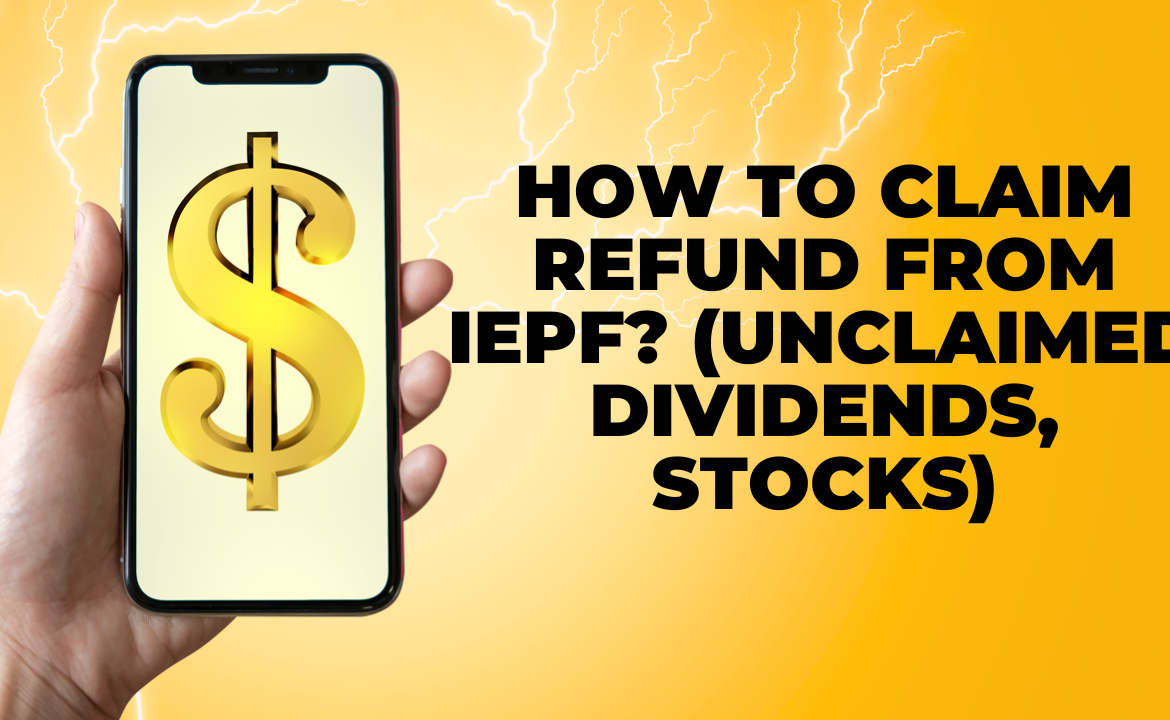Claiming a refund from the Investor Education and Protection Fund (IEPF) is a process designed to facilitate the return of unclaimed dividends and stocks to rightful owners. When dividends or shares remain unclaimed for a specified period, they are transferred to the IEPF, a statutory body under the Ministry of Corporate Affairs in India. This mechanism aims to protect the interests of investors and ensure that unclaimed assets are eventually returned to their legitimate owners. The process involves specific procedures and documentation, making it essential for individuals to understand the steps involved in reclaiming their unclaimed dividends and stocks from the IEPF.
Understanding Unclaimed Dividends and Stocks
Understanding unclaimed dividends and stocks is vital for investors as these assets may become subject to transfer to the Investor Education and Protection Fund (IEPF). Unclaimed dividends and stocks typically arise when investors fail to claim their entitled income or fail to update their details with the respective companies or registrars. Various reasons contribute to unclaimed assets, including changes in address, death of the investor, or oversight.
The legal framework governing unclaimed assets stipulates a specific period after which companies transfer such assets to the IEPF, aiming to protect the interests of investors. Investors need to be aware of the duration before assets are transferred and the criteria that determine the eligibility for such transfers. This knowledge empowers individuals to proactively manage their investments, ensuring they do not lose access to dividends and stocks and, if necessary, enabling them to navigate the process of reclaiming these assets from the IEPF.
Identifying Eligibility for Refund
Identifying eligibility for a refund from the Investor Education and Protection Fund (IEPF) is a critical step for individuals seeking to reclaim unclaimed dividends and stocks. Eligibility criteria are based on various factors, including the duration for which dividends or stocks have remained unclaimed and the legal provisions governing such transfers. Investors should carefully check whether their assets have been transferred to the IEPF by accessing the relevant databases or contacting the companies or registrars.
Verification of ownership details is crucial during this process. Investors must ensure that their personal information, including names, addresses, and other relevant details, aligns accurately with the records of the companies or registrars. In cases of inheritance or transfer of ownership, providing necessary documentation to establish the rightful claim is essential.
Steps to Claim Refund from IEPF
Claiming a refund from the Investor Education and Protection Fund (IEPF) involves a series of well-defined steps to ensure a smooth and successful process:
- Accessing the IEPF Portal: Visit the official IEPF website (www.iepf.gov.in) to access the portal dedicated to refund claims.
- Registration and Login Procedures: Create an account on the IEPF portal by providing necessary details. Once registered, log in using the credentials.
- Filing Refund Application: Navigate to the refund application section and fill in the required information accurately. Include details of unclaimed dividends or stocks and the relevant financial instruments.
- Required Documentation: Attach supporting documents, such as proof of investment, identity proof, and address proof, to substantiate the claim. Ensure all documents comply with the specified guidelines.
- Verification Process: The IEPF scrutinizes the application and documents submitted. Any discrepancies or additional information required may be communicated to the claimant.
By following these steps diligently and ensuring all documentation is in order, investors can increase the likelihood of a successful refund claim from the IEPF. Timely and accurate completion of these steps is crucial to reclaiming unclaimed dividends and stocks.
Common Challenges and Solutions
Investor Education and Protection Fund (IEPF) may pose several common challenges, but proactive measures can address these issues effectively:
- Ownership Discrepancies: Challenges may arise if there are discrepancies in ownership details. Solutions involve providing legal documentation, such as inheritance certificates or transfer of ownership documents, to establish rightful ownership.
- Documentation Issues: Incomplete or inaccurate documentation can hinder the refund process. A solution is to meticulously follow the IEPF guidelines for required documents, ensuring all information is accurate and up-to-date.
- Communication Gaps: Lack of clarity or communication gaps with the IEPF can be a challenge. Regularly checking the status of the refund application and promptly responding to any queries or requests for additional information can help overcome this challenge.
- Technical Glitches: Users may encounter technical issues on the IEPF portal. Ensuring compatibility with recommended browsers, clearing cache, and seeking assistance from customer support can resolve such challenges.
- Lack of Awareness: Many investors may be unaware of the IEPF refund process. Increasing awareness through educational initiatives, workshops, and clear communication from regulatory bodies can address this challenge.
Timelines and Important Points to Note
Navigating the refund process with the Investor Education and Protection Fund (IEPF) involves adhering to specific timelines and understanding critical points to ensure a successful claim:
- Deadline for Filing Refund Claims: Investors must be aware of the prescribed timeline within which refund claims should be filed. Failing to adhere to these deadlines may result in the forfeiture of unclaimed dividends and stocks.
- Processing Time: The IEPF undertakes a thorough verification process upon receiving refund claims. Investors should be mindful of the processing time, understanding that it may take several weeks or months for their claims to be verified and processed.
- Communication from IEPF: Regularly checking communication from the IEPF is crucial. Investors may receive notifications regarding the status of their refund claims or requests for additional information. Promptly responding to any communication ensures a smoother process.
- Periodic Checking of Status: Periodically checking the status of the refund application on the IEPF portal is advisable. This allows investors to stay informed about the progress of their claims and take any necessary actions promptly.
- Consistency in Information: Ensuring consistency in the information provided throughout the refund process is vital. Any changes in personal details or ownership should be promptly updated to avoid discrepancies.
Case Studies and Real-Life Experiences
A cryptocurrency investor faced challenges due to unclaimed dividends transferred to the IEPF. Through meticulous documentation, timely responses, and a clear understanding of the process. The investor successfully reclaimed assets, highlighting the importance of proactive measures. An individual inheriting stocks encountered difficulties due to incomplete inheritance documentation. Consulting legal professionals and providing comprehensive documentation helped resolve the issue, emphasizing the significance of accurate paperwork.
A case where an investor received queries from the IEPF underscores the importance of timely responses. Swiftly addressing concerns and providing requested information facilitated a smoother verification process, expediting the refund. Instances of technical glitches on the IEPF portal were reported. Investors who sought assistance from customer support and persisted in overcoming technical challenges successfully completed the refund process.
Conclusion
In conclusion, reclaiming unclaimed dividends and stocks from the Investor Education and Protection Fund (IEPF) demands a strategic and informed approach. Real-life experiences and case studies illustrate both challenges and successful outcomes. Timely filing, meticulous documentation, and consistent communication with the IEPF are pivotal. Investors should stay informed about deadlines and processing timelines, ensuring a proactive and vigilant stance throughout the refund process. By understanding the nuances, learning from past experiences, and staying updated on guidelines. Individuals can navigate the IEPF refund process effectively, reclaiming their unclaimed assets. And reinforcing the importance of investor protection in financial ecosystems.
Also Read:
- Fixed Deposits vs Money Market Funds ; Which One is Right for You?
- International Mutual Funds in India- Should you Invest?
- Should you Invest in retirement savings fund?
- Potential Risk Matrix in Debt Mutual funds- How to Interpret?

Hello, I am Tanisha Kriplani, graduated in computer science from Delhi University. I am passionate about web content writing and have a strong interest in Data Analytics and Data Engineering.












